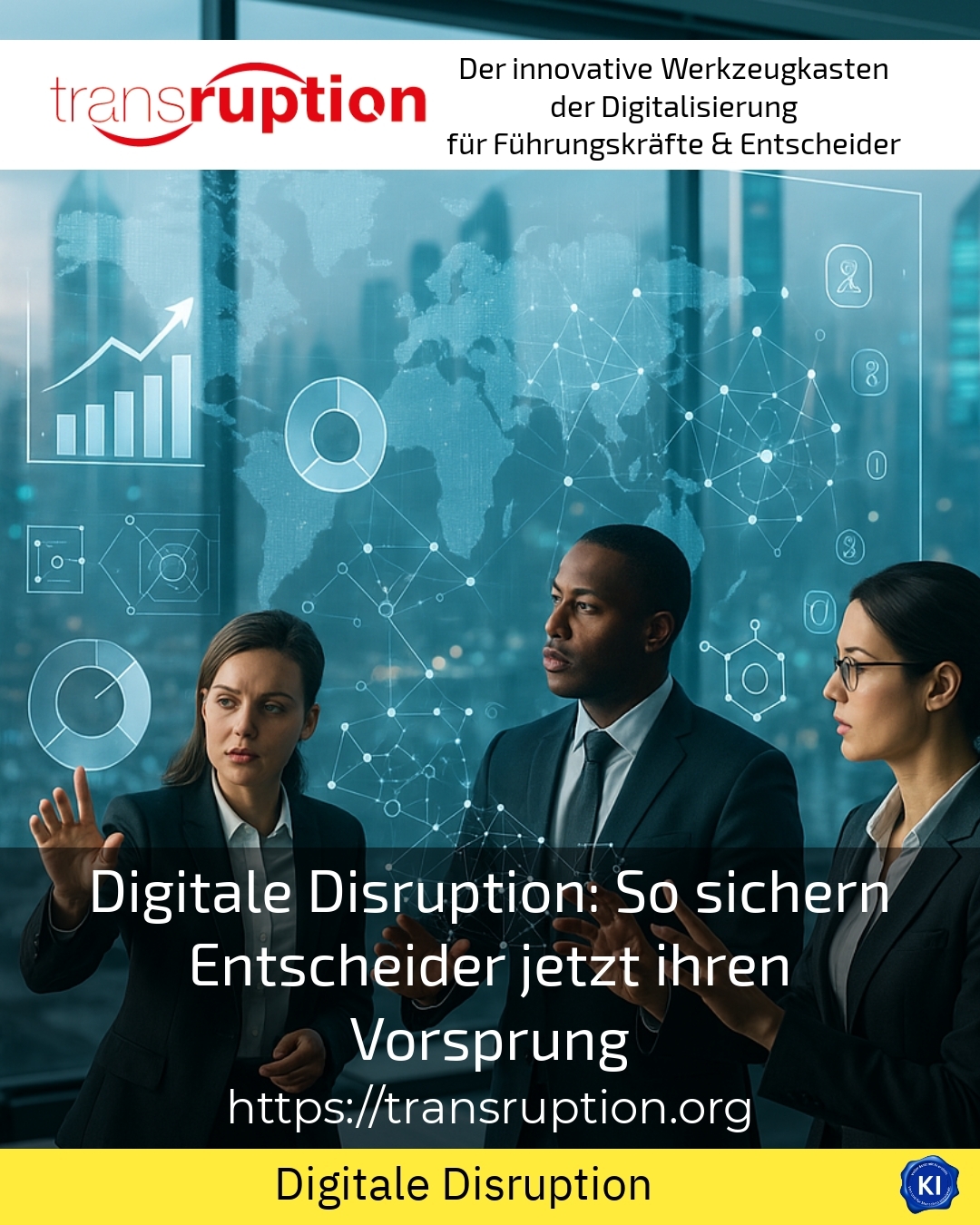Digital disruption is currently changing the rules of the game in almost all industries. Decision-makers are faced with the challenge of not only securing their lead, but also extending it. Digital disruption means more than just digitalisation - it stands for a radical transformation of markets, business models and customer relationships. Only those who understand at an early stage how disruptive technologies and new digital business models are transforming their own business will remain competitive.
Recognising and understanding digital disruption
Digital disruption goes far beyond the classic digital transformation. It breaks up familiar structures and often creates completely new markets through innovative approaches. One example is the taxi industry: Uber has revolutionised the traditional market with a digital platform by connecting drivers and passengers directly and thus challenging established business models. Airbnb, which makes private flats available to travellers via a digital platform, has had a similarly disruptive effect. Netflix has also changed the media landscape by enabling streaming instead of physical DVD rentals.
These examples show: Digital disruption is often based on a platform economy that displaces familiar market players or changes their role. Decision-makers are faced with the task of anticipating these changes and responding to the digitalisation of their business models in a targeted manner.
How decision-makers secure their lead
In order to meet the challenges of digital disruption, managers should consider the following steps:
- Recognising trends at an early stage: Decision-makers should observe digital innovations and evaluate how they can influence their own business model.
- The courage to change: Existing processes and offerings must be scrutinised and, if necessary, rethought, even if this means internal changes.
- Cooperation with start-ups and technology partners: These can provide fresh impetus and facilitate access to new technologies.
- Utilisation of data-based decision-making processes: Big data and artificial intelligence help to better understand customer needs and respond more quickly.
- Creation of an agile corporate culture: Flexibility and a willingness to learn support rapid adaptation to market changes.
BEST PRACTICE at the customer (name hidden due to NDA contract) Coaching helped a medium-sized company in the logistics sector to develop digital platform solutions that made delivery processes more efficient and at the same time offered customers new digital services. This enabled the client to expand its market share and acquire new customers despite strong competition.
Industry examples of digital disruption
Various industries have been transformed in different ways by digital disruption:
- Retail: Amazon has fundamentally changed shopping with its online platform. A wide range of products, fast delivery and convenient payment have redefined customer needs. Traditional bricks-and-mortar retailers have had to adapt their strategies or lose market share.
- Music and entertainment industry: Spotify promoted the shift from buying to streaming music. Physical sound carriers lost much of their importance. At the same time, the platform offers artists new opportunities for distribution and fan loyalty.
- Financial services: Digital payment systems such as PayPal or cryptocurrencies are challenging traditional banking services. New players enable fast, secure transactions without traditional banking structures.
BEST PRACTICE at the customer (name hidden due to NDA contract) A financial services provider was supported in the development of a digital payment system. This opened up new customer segments and strengthened the company's competitive position through innovative mobile applications.
Digital disruption as an opportunity for innovation
Digital disruption not only harbours risks, but above all opportunities. Companies can use digital technologies to develop new business models, for example through platforms, IoT solutions or AI-based services. One example from the automotive industry is Tesla, which is reshaping the market with electric cars and autonomous driving functions.
The combination of different technologies also creates added value. Thanks to the digital networking of vehicles and AI-supported route planning, a logistics company can increase its efficiency and offer customers more customised services. This creates new competitive advantages.
My analysis
Digital disruption remains a key driver of economic change. Decision-makers are required to design their organisations flexibly and actively manage change. Recognising disruptive trends at an early stage and taking consistent action help to ensure competitiveness. Coaching and support for innovation projects provide valuable impetus and help overcome internal challenges. Companies that have embraced digital disruption and adapted their business models are increasingly benefiting from the opportunities offered by the new digital world.
Further links from the text above:
Digital disruption - Innolytics
7 successful examples of disruptive innovations
Digital disruption - IT-P
Disruptive business models - Digital Centre Chemnitz
Digital disruption: How decision-makers steer successfully
For more information and if you have any questions, please contact Contact us or read more blog posts on the topic TRANSRUPTION here.















